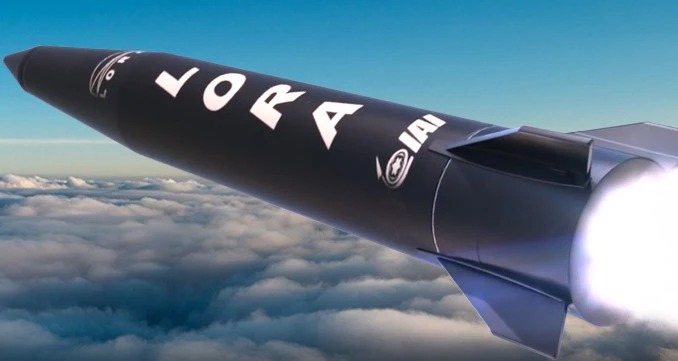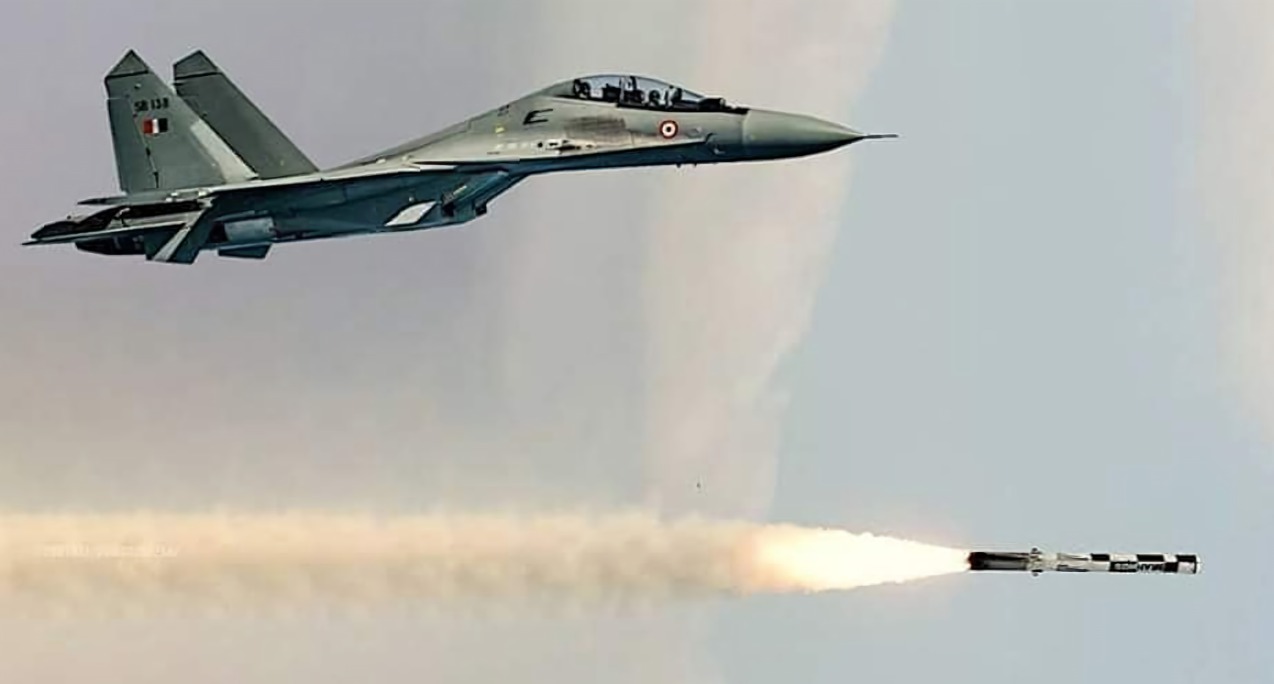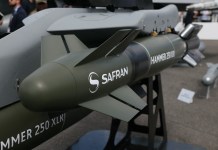The Indian Air Force (IAF) is reportedly considering the acquisition of the Israeli Air-Launched Long-Range Artillery (LORA) missile, despite already possessing the supersonic BrahMos air-launched missile.
The interest in Air LORA, reported in early July 2025, follows the IAF’s successful deployment of the Rampage missile during Operation Sindoor in May 2025, which underscored the need for advanced stand-off weapons capable of penetrating sophisticated enemy air defences.
Designed by Israel Aerospace Industries (IAI), Air LORA, which can strike targets up to 400–430 kilometers away, would enable Indian combat aircraft to launch high-impact strikes from well beyond the range of most enemy air defence systems.
This capability is crucial for maintaining safety while degrading enemy targets within hostile territory.
AIR LORA Missile: Capabilities & Specifications
Air LORA is not just a rehashed missile placed under a jet’s wing. It represents a marriage of ballistic missile technology and air-launched precision warfare.
It is a quasi-ballistic missile that follows a depressed trajectory compared to traditional ballistic missiles. This makes it harder to intercept and allows for greater flexibility in targeting. One of its most attractive features is its fire-and-forget capability, which enables a pilot to disengage immediately after launch.
Additionally, the missile can receive mid-course updates, allowing operators to redirect it mid-flight, a significant advantage in dynamic combat situations.
The AIR LORA, a derivative of the ground-launched Long-Range Artillery (LORA) missile, is a supersonic air-launched ballistic missile designed to deliver precision strikes against high-value targets at extended ranges. Its Key features include:-
- Range: 400–430 kilometers.
- Speed: Supersonic, travelling at approximately Mach 5.
- Accuracy: Circular Error Probable (CEP) of less than 10 meters.
- Warheads: Both blast-fragmentation and deep-penetration types, with a total weight of up to 570 kilograms.
- Weight and Dimensions: 1,600 kg total missile weight; 5.2 meters in length.
The missile’s navigation system relies on a combination of GPS and Inertial Navigation System (INS), augmented by anti-jamming technology to ensure accuracy even in contested environments.
Unlike some precision-guided munitions that require active seekers, AIR LORA’s seeker-less design reduces complexity and cost while maintaining a high degree of accuracy.
It can be equipped with either blast fragmentation or deep-penetration warheads, making it versatile for targeting a range of assets, from airbases and command centers to naval vessels and hardened bunkers.

Analytical Perspective
Deep-Strike Capability: With the LORA missile integrated into its air combat platforms, India could reach deep into enemy territory without entering contested airspace.
Targets that would traditionally require multi-aircraft sorties or high-risk approaches could be neutralised with a single long-range missile fired from safe standoff distances.
This capability is particularly significant given India’s border challenges. Being able to strike enemy military infrastructure from Indian airspace would drastically reduce operational risks and improve the tempo of offensive operations.
Flexibility: The missile is compatible with several IAF platforms. This cross-platform flexibility means the IAF could potentially integrate the system into multiple platforms, ensuring distributed lethality and redundancy across its fleet.
A single Su-30 MKI can carry up to four AIR LORA missiles, enabling a single sortie to deliver devastating strikes against multiple targets.
Complementing India’s Missile Arsenal: India already possesses an array of precision-guided long-range strike systems, such as BrahMos (Supersonic cruise missile with 300–500 km range), SCALP-EG (Used with Rafale, range of ~500 km), Pralay (Short-range ballistic missile (~500 km), and Rampage (Air-to-ground missile used successfully in recent operations).
Air LORA would not replace these systems but augment them, filling a critical capability gap, specifically in air-launched ballistic precision strikes.
Industrial Impact: One of the defining features of this potential procurement is the Make in India element.
IAI and Bharat Electronics Limited (BEL) signed a Memorandum of Understanding (MoU) in 2023 for joint production and technology transfer related to LORA and other defence systems.
This partnership not only facilitates technology transfer but also positions India as a potential exporter of advanced missile systems in the future.
If the Air LORA deal moves forward, it could be manufactured in India under license, aligning with the country’s goals of defence indigenisation and strategic autonomy.
Local production of AIR LORA could reduce costs, enhance supply chain resilience, and create jobs, further boosting India’s defence manufacturing ecosystem.
Cost Effectiveness: The estimated unit cost of Air LORA ranges from $1 million to $5 million, depending on the configuration and payload. While not inexpensive, it is competitively priced compared to similar long-range missile systems, particularly when factoring in its precision and survivability.
Challenges & Concerns: Air LORA marks a significant advancement in capability, but it faces certain operational and logistical hurdles. Integrating and testing it on Indian platforms will demand extensive flight trials.
Its resistance to electronic warfare and survivability in contested environments still need thorough evaluation. Additionally, its cost-effectiveness compared to other indigenous systems, such as BrahMos or the developing Long-Range Land-Attack Cruise Missile (LRLACM), warrants careful consideration.
Despite these challenges, Air LORA’s operational advantages appear to outweigh the potential risks.

Will Air LORA Replace BrahMos?
With its range, speed, and accuracy, Air LORA is not just another missile; it is a tool for deterrence, rapid escalation dominance, and strategic messaging.
India is exploring the LORA (Long-Range Artillery) missile to complement its BrahMos missile, thereby enhancing its strategic and tactical capabilities.
Unlike BrahMos, a supersonic cruise missile with a low-altitude, high-speed trajectory, LORA is a quasi-ballistic missile with a lofted trajectory, offering greater flexibility in targeting and evading defences.
LORA’s lower cost makes it an economical option for mass deployment. It has potential for export under India’s “Make in India” initiative, thereby fostering domestic production and enhancing global market competitiveness.
Additionally, LORA’s larger payload capacity enables it to deliver heavier warheads, increasing its destructive power.
Integrating LORA into Indian Air Force jets diversifies the missile arsenal, providing a versatile, high-impact option for various combat scenarios.
This strategic addition would strengthen India’s defense capabilities, ensuring a balanced mix of speed, cost efficiency, and firepower alongside BrahMos.
The potential induction of the air-launched LORA missile into India’s arsenal could significantly enhance its strategic depth and offensive precision.
- Air Marshal Anil Khosla is a former Vice Chief of Air Staff (VCAS) of the Indian Air Force and AOC in C of Eastern Air Command.
- He tweets at: @AnilKhosla16




